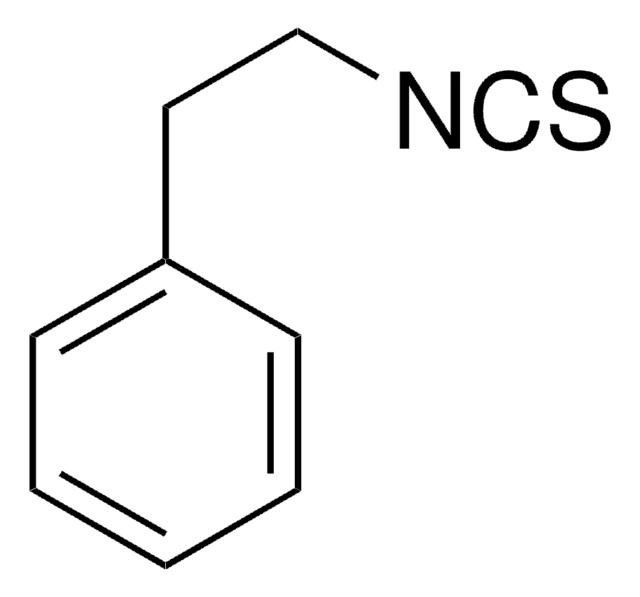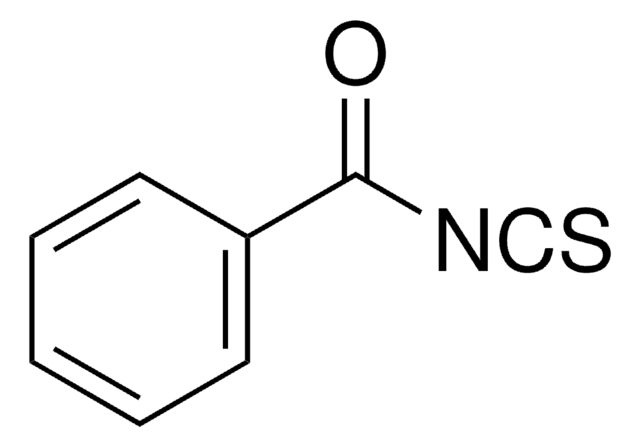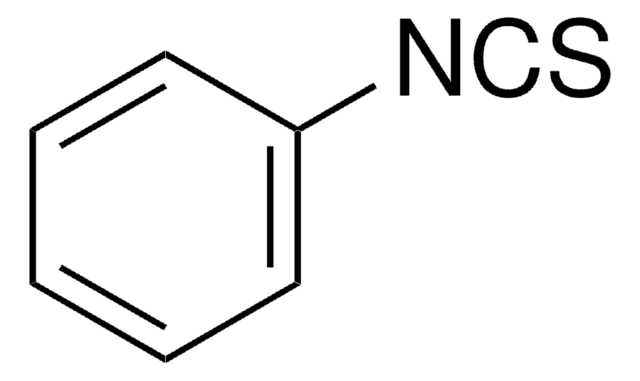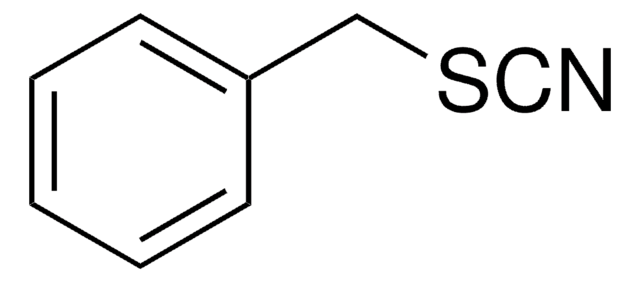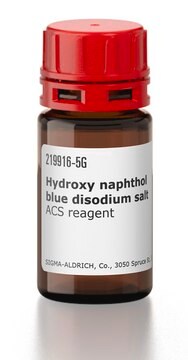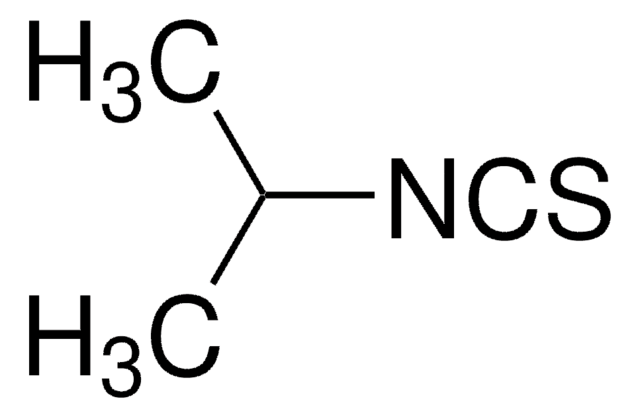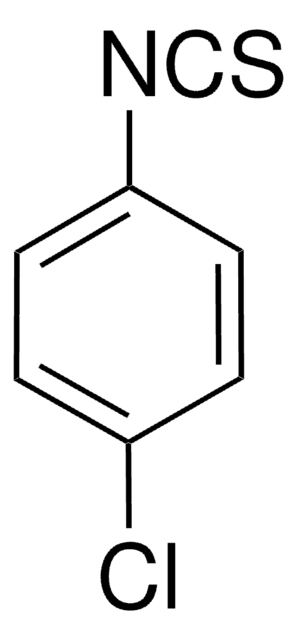252492
Benzyl isothiocyanate
98%
Synonym(s):
Benzyl mustard oil, Isothiocyanotaomethylbenzene
About This Item
Recommended Products
Quality Level
assay
98%
form
liquid
refractive index
n20/D 1.601 (lit.)
bp
242-243 °C (lit.)
density
1.125 g/mL at 25 °C (lit.)
functional group
amine
isothiocyanate
phenyl
storage temp.
2-8°C
SMILES string
S=C=NCc1ccccc1
InChI
1S/C8H7NS/c10-7-9-6-8-4-2-1-3-5-8/h1-5H,6H2
InChI key
MDKCFLQDBWCQCV-UHFFFAOYSA-N
Looking for similar products? Visit Product Comparison Guide
General description
Application
- N
- -benzylthioureas by reacting with various amines.
- N-benzyl-O-alkyl carbamates by treating with long-chain alcohols.
- 3-mercapto-1,2,4-triazole building block by reacting with formylhydrazine via acyl thiosemicarbazide intermediate formation.
- S-(N-benzylthiocarbamoyl)-L-glutathione and S-(N-benzylthiocarbamoyl)-L-cysteine.
signalword
Danger
Hazard Classifications
Acute Tox. 4 Oral - Eye Irrit. 2 - Resp. Sens. 1 - Skin Irrit. 2 - Skin Sens. 1 - STOT SE 3
target_organs
Respiratory system
Storage Class
10 - Combustible liquids
wgk_germany
WGK 3
flash_point_f
222.8 °F
flash_point_c
106 °C
ppe
Eyeshields, Faceshields, Gloves, type ABEK (EN14387) respirator filter
Choose from one of the most recent versions:
Already Own This Product?
Find documentation for the products that you have recently purchased in the Document Library.
Customers Also Viewed
Our team of scientists has experience in all areas of research including Life Science, Material Science, Chemical Synthesis, Chromatography, Analytical and many others.
Contact Technical Service
